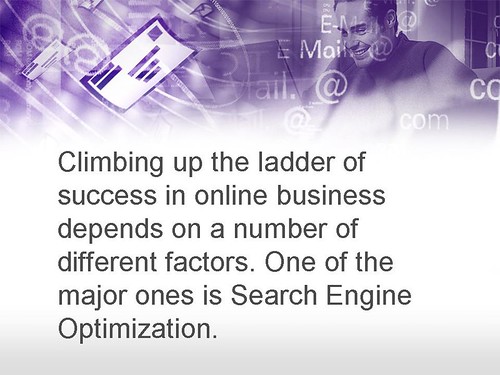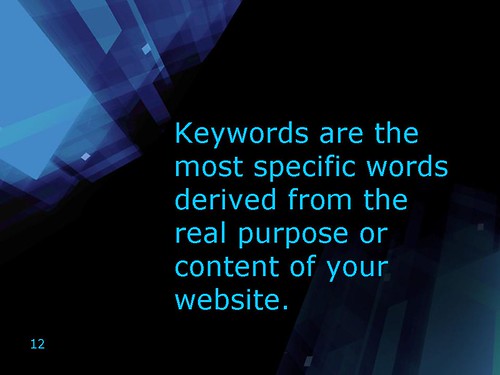A few years ago, the Internet experienced a video revolution. As broadband access expanded and more people began uploading content, video became an expected resource for consumers. Businesses could get more mileage out of television commercials and engage users by linking to video reviews of its products.
A year ago, we saw evidence of small and medium-sized business increasing budgets for video content – to be used both on their homepages and in advertisements. In 2009, 19% of businesses polled were using video (up from 5% in 2008) and I’m willing to bet that number will be much higher in the 2010 report that should come out later this month.
Now, as technology has become more affordable and increasingly mobile, we’re able to experience virtually anything online. As such, local search engines are evolving into master content synthesizers to meet the needs of consumers and advertisers alike – offering video and photos, local advertising deals, user reviews, QR codes, maps and directions, etc.
Consumer expectations of local search engines have never been higher. Users want to see photo and video reviews of a company’s products, read what other people have to say, and even take a virtual tour of your store or restaurant before they visit.
The same is true of small- and medium-sized business owners looking to find a competitive advantage. Local search engines are offering more dynamic content than ever before to users and it’s up to search marketers to help business owners feed that content.
It’s interesting to see how video content has changed since the advent of YouTube. Instead of traditional video advertising, we’re seeing new technology that lets users look around your business from their own home. Soon, we’ll be able to find virtual creations of almost any environment online – and those virtual tours are being integrated with current deals and other advertising promotions to drive traffic to your business.
Recently, a company called EveryScape partnered with Bing and YP to offer digital advertisers a new local search solution – virtual tours. For example, YP360 will let a user step inside a restaurant in Baltimore while they’re still on the train. They can choose a place and even set a reservation, all within the same application on their phone.
Google Earth has gone indoors and local search engines are responsible for bringing this detailed and vivid content to users while keeping it simple and accessible. And the business case for offering this new content to users and advertisers alike is clear as local advertising is expected to grow to $16.1 billion this year, up from $13.7 billion in 2010.
Even more, mobile phone advertising spending is expected to be more than a billion dollars in 2011, up 48% from 2010. Local search engines like YP and Yelp! are seeing over 20 million visitors a month, many of them accessing via mobile phones.
This is a great opportunity for local search engines and advertisers to embrace this new technology and get ahead of the pack. Effective local advertising goes beyond building a social networking presence and listing in directories – you have to make sure your content is engaging. In the online world, the savviest local search marketers who use this technology well will have the most successful campaigns.
I recommend that any business owner or local search marketer read up on the latest digital advertising solutions and consider offering your customers virtual tours of your products or store. To set your business apart, you need to stay current with the best that local search has to offer.
Opinions expressed in the article are those of the guest author and not necessarily Search Engine Land.
Related Topics: Locals Only
If you don't know much about Justin Bieber's rise to superstardom, James Parker provides a good primer:
How did he do it? With YouTube, that’s how. Kissed in his cradle by the witch of the Web, Justin was throwing up little promo reels by the time he was 12. Singing a Brian McKnight song into the bathroom mirror. Or sitting on some municipal steps somewhere, busking mightily about the Lord: “You’re my God and my Fa-ther!” he bellows through the legs of passersby, the wooden body of his guitar reverberating with his shouts. ...
Bieber wasn’t from the Disney factory, and he didn’t have a show on Nickelodeon, so the marketing plan was skewed toward his already established constituency in social media: lots of Facebooking and YouTubing and sugary tweets to his millions-strong Twitter army.
Surface Encounters
Chad Ochocinco of Cincinnati Bengals gets reserve spot on Sporting KC
![]() After a five-day tryout, NFL star Chad Ochocinco has been awarded a spot on the reserve team for Sporting Kansas City of Major League Soccer.
After a five-day tryout, NFL star Chad Ochocinco has been awarded a spot on the reserve team for Sporting Kansas City of Major League Soccer.
Surface Encounters
The Funniest Fox <b>News</b> FAILS (PICTURES)
News bloopers are some of the best ones, especially when the flub involves a hilariously erroneous chyron or graphic. Fox News has had some of the funniest FAILS the Internet was able to capture, and we've corralled all the best ones ...
Surface Encounters
PS3 Jailbreak: Hotz strikes back PlayStation 3 <b>News</b> - Page 1 <b>...</b>
Read our PlayStation 3 news of PS3 Jailbreak: Hotz strikes back.
Surface Encounters
I read an interesting article this morning that suggested Apple would change its mind and put Adobe’s Flash technology on its iOS devices within a year. I don’t think that’s going to happen.
In an open letter to users, Apple CEO Steve Jobs gave several reasons why he didn’t want Flash on the iPad, iPhone or iPod touch. They are: Flash isn’t open; the full web; reliability, security and performance; battery life; and touch.
Adobe began shipping Flash Player 10.1 for Mobile last June, but even Laptop magazine admitted that “Steve Jobs was right,” and that “Adobe’s offering seems like it’s too little, too late.” Granted, that report was from six months ago, but it still doesn’t bode well for the technology.
There is no doubt that Adobe is making advances with Flash on mobile devices, but I don’t believe future changes will be enough to get Apple to adopt the technology.
Jobs has been very clear that Apple supports HTML5, an open technology that is controlled by a standards committee, not one company. By building support for that technology into Webkit, Apple is ensuring that mobile Web browsers will be able to access what we’ve come to know as the “full web.”
Webkit is used by Google, Palm, Nokia and RIM, so it has a pretty solid base.
One of the arguments often bantered about when the discussion of the “full Web” comes up is video. There is no doubt that Flash made huge strides over the years in having sites like YouTube encode their videos in Flash. But that’s for the desktop.
As Jobs points out, almost all of this video is also available in H.264 format (a format Flash also supports), so it’s viewable on the iPhone, iPad and iPod touch.
“Add to this video from Vimeo, Netflix, Facebook, ABC, CBS, CNN, MSNBC, Fox News, ESPN, NPR, Time, The New York Times, The Wall Street Journal, Sports Illustrated, People, National Geographic, and many, many others. iPhone, iPod and iPad users aren’t missing much video,” wrote Jobs.
You may ask why other companies adopted Flash for their mobile devices when Apple won’t. That’s easy, they are looking for something they have that Apple doesn’t. Considering how hard it is for tablet makers to compete with Apple, any perceived advantage will work.
I’m not an Adobe hater—I know quite a few people that work at Adobe and I think they’ve done some amazing things over the years. Flash for mobile devices isn’t one of them.
Chris Dawson said he gives “Apple a year until they cave [and adopt Flash]. Android tablets will just be too cool and too useful for both entertainment and enterprise applications if they don’t.”
I have been using my iPhone for years and my iPad for one year. I honestly can’t remember the last time I went to a Web site that wouldn’t load because I didn’t have Flash installed. I can load videos from YouTube and a host of other sites too, no problem.
Apple has sold more than 160 million iOS devices and there are no screaming, angry hordes of users breaking down the doors at 1 Infinite Loop demanding Flash on their devices.
In order for Apple to change its mind and adopt Flash, the technology has to be proven to be indispensable and that it will benefit its users. Apple has proven just the opposite is true.
Editor’s Note: Jim Dalrymple has been writing about Apple for more than 15 years. You can follow him on Twitter @jdalrymple and on his Web site at The Loop.
Dirty Percent
Tuesday, 1 March 2011
It’s not hard to make the case that Apple’s new in-app subscription system offers numerous benefits to users, developers, and publishers. But whatever those benefits, they stem from the mere existence of these new subscription APIs. What’s controversial is the size of Apple’s cut: 30 percent.
No one is arguing that Apple shouldn’t get some cut of in-app purchases that go through iTunes. And, if Apple were taking a substantially smaller cut, there would be substantially fewer people objecting to Apple’s rules (that subscription-based publishing apps must use the system; that they can’t link to their external sign-up web page from within the app; and that they must offer in-app subscribers the same prices available outside the app).
The reasonable arguments against Apple’s policies seem to be:
Apple should be taking less, perhaps far less, than 30 percent.
Apple should not require subscription-based apps to use the in-app subscription APIs. If it’s a good deal for publishers, they’ll choose to use the system on their own.
Apple should not require price-matching from subscription offers outside the app. Publishers should be allowed to charge iOS users more money to cover Apple’s cut.
Apple should consider business models that simply can’t afford a 70/30 revenue split.
Let’s consider these in reverse order.
Apple Should Consider Business Models That Can’t Afford a 70/30 Revenue Split
Apple doesn’t give a damn about companies with business models that can’t afford a 70/30 split. Apple’s running a competitive business; competition is cold and hard. And who exactly can’t afford a 70/30 split? Middlemen. It’s not that Apple is opposed to middlemen — it’s that Apple wants to be the middleman. It’s difficult to expect them to be sympathetic to the plights of other middlemen.
Some of these apps and services that are left out might be ones that iOS users enjoy, though. This is the leading argument for how this new policy will in fact hurt users, and, as a result, Apple itself: it’ll drive good apps off the platform. Frequently mentioned examples: Netflix and Kindle. For all we know, though, Netflix may well be fine with this policy. Apple would only get a 30 percent cut of new subscriptions that go through the Netflix iOS app, and that might be a bounty Netflix can live with in exchange for more subscribers. Keep in mind, too, that Netflix and Apple seemingly get along well enough that Netflix is built into the Apple TV system software.
Kindle, and e-book platforms in general, are a different case. For one thing, Kindle doesn’t use subscriptions. Kindle offers purchases. Presumably, given Apple’s rejection of Sony’s e-book platform app last month, Apple is going to insist on the same rules for in-app purchases through apps like Kindle as they do for in-app subscriptions. If so, something’s got to give. The “agency model” through which e-books are sold requires the bookseller to give the publisher 70 percent of the sale price. So if the publisher gets 70 and Apple gets 30, that leaves a big fat nothing for Amazon, or Barnes & Noble, or Kobo, or anyone else selling books through native iOS apps — other than iBooks, of course.
But leaving aside the revenue split, there are technical limitations as well. The existing in-app purchasing system in iOS has a technical limit of 3,500 catalog items. I.e. any single app can offer no more than 3,500 items for in-app purchase. Amazon has hundreds of thousands of Kindle titles.
Something’s got to give here. I don’t know what, but there must be more news on this front coming soon. I don’t believe Apple wants to chase competing e-book platforms off the App Store.
Apple Should Not Require Price Matching
Why not allow developers and publishers to set their own prices for in-app subscriptions? One reason: Apple wants its customers to get the best price — and, to know that they’re getting the best price whenever they buy a subscription through an app. It’s a confidence in the brand thing: with Apple’s rules, users know they’re getting the best price, they know they’ll be able to unsubscribe easily, and they know their privacy is protected.
Credit card companies insist on similar rules: retailers pay a processing fee for every credit card transaction, but the credit card companies insist that these fees not be passed on to the customer. Customers pay the same price as they would if they used cash — which encourages them to use their credit card liberally. (Going further, many charge cards offer cash back on each purchase — they can do this because the cash-back percentage refunded to the customer is less than the transaction processing fee paid by the retailer.)
So the same-price rule is good for the user, and good for Apple. But Matt Drance argues that Apple could dissipate much of this subscription controversy by waiving this rule:
The requirement that IAP content be offered “at the same price
or less than it is offered outside the app,” combined with the
70/30 split, means developers must make less money off of iOS by
definition. They can’t price their IAP content higher to offset
the commission, nor can they price their own retail content lower.If I am interpreting this correctly, I can’t bring myself to see
it as reasonable. […] I think a great deal of this drama could
go away if Apple dropped section 11.13 while keeping section
11.14: Your prices on your store are your business; just don’t
be a jerk and advertise the difference all over ours.
And I agree with him. Yes, the same-price rule is good for users and for Apple, but waiving this rule wouldn’t be particularly bad for users or for Apple, either — and it would give publishers some freedom to experiment.
I suspect one reason Apple won’t budge is that their competitors — like Amazon — insist on best-price matching.
Apple Should Not Require Apps to Offer In-App Subscriptions
I’m sympathetic to this argument, too. “If you don’t like our terms, don’t use our subscription system.” But it has occurred to me that this entire in-app subscription debate mirrors the debate surrounding the App Store itself back in 2008 — that 30 percent was too large a cut for Apple to take, that it shouldn’t be mandatory, etc. The same way many developers wanted (and still want) a way to sell native iOS apps on their own, outside the App Store, many publishers now want a way to sell subscriptions on their own, outside the App Store.
The fact is, the App Store is an all-or-nothing affair. You play by Apple’s rules or you stick to web apps through Mobile Safari. This alternative is no different for periodical publishers than it was (and remains) for app developers in general. A lot of these demands boil down to a desire for more autonomy for native iOS app developers. Apple has never shown any interest in that.
There’s one striking difference between the subscription controversy today and the App Store controversy in 2008: with subscriptions, Apple is taking away the ability to do something that they previously allowed. There was never a supported way to install native apps for iOS before the App Store. Subscriptions sold outside the App Store, on the other hand, were allowed until last month.
Apple Should Be Taking Less, Possibly Far Less, Than 30 Percent
Another difference between the App Store itself and in-app subscriptions is that with apps, Apple hosts and serves the downloads. Apple covers the bandwidth, even for gargantuan gigabyte-or-larger 99-cent games. The OS handles installation.
With in-app subscriptions (and purchases), however, the app developer is responsible for hosting the content, and for writing the code to download, store, and manage it. So — one reasonable argument goes — given that Apple is doing less for subscription content than it does for apps (or for music and movies purchased through iTunes), Apple should take less of the money.
Taken further, the argument boils down to this: that for in-app subscriptions and purchases, Apple is serving only as a payment processer — and thus, a reasonable fee for transactions would be in the small single digits — 3, 4, maybe 5 percent, say. More or less something along the lines of what PayPal charges.
Apple, I think it’s clear, doesn’t see it this way. Apple sees the entire App Store, along with all native iOS apps, as an upscale, premium software store: owned, controlled, and managed like a physical shopping mall. Brick and mortar retailers don’t settle for a single-digit cut of retail prices; neither does the App Store.
Seth Godin argues that Apple’s 30 percent cut is too big to allow publishers to profit:
Except Apple has announced that they want to tax each subscription
made via the iPad at 30%. Yes, it’s a tax, because what it does is
dramatically decrease the incremental revenue from each
subscriber. An intelligent publisher only has two choices: raise
the price (punishing the reader and further cutting down
readership) or make it free and hope for mass (see my point above
about the infinite newsstand). When you make it free, it’s all
about the ads, and if you don’t reach tens or hundreds of
thousands of subscribers, you’ll fail.
Godin’s logic strikes me as questionable. For one thing, he freely switches between a newsstand metaphor (arguing, perhaps accurately, that the App Store is too large for publishers to gain attention from potential readers in the first place — you won’t read what you never notice) and the economics of subscriptions. But subscribers are the opposite of newsstand readers. Newsstand readers are buying a single copy, often on impulse. Subscribers are readers who are already hooked, and who know what they want. Put another way, the size of Apple’s cut of subscription revenue — whether it were higher or lower — has no bearing on the “attention at the newsstand” problem.
Second, the problem facing traditional publishers today is that circulation is falling. Newsstand sales and subscriptions are falling, under pressure from free-of-charge websites and other forms of digital content. The idea with Apple’s 70-30 revenue split is that developers and publishers can make it up in volume — that people aren’t just somewhat more willing to pay for content through iTunes than other online content stores, they are far more willing. The idea is that Apple has cracked a nut no one else1 has — they’ve created an ecosystem where hundreds of millions of people are willing to pay for digital content. Thus, potentially, publishers won’t just make more money keeping only 70 percent of subscription fees generated through iOS apps than they are now with 96 percent (or whatever they’re left with after payment processing fees) of subscription fees they’re selling on their own — they stand to make a lot more money.
I’m not guaranteeing or even predicting that it’s going to work out that way. I’m just saying that’s Apple’s proposition.
Godin’s assumption is that iOS in-app subscriptions won’t significantly increase the number of subscribers. If he’s right about that, then he’s right that Apple’s 30 percent cut will prove too expensive for publishers. But Apple’s bet is that in-app subscriptions can dramatically increase the number of subscribers. Consider the app landscape. Apple’s 30 percent cut didn’t drive the price of paid apps up — the nature of the App Store drove prices down. It’s a volume game.
The App Store itself proves that Apple might be right. Like with app sales, in-app subscriptions won’t work for every publication. But it could work for many. It really is possible to make it up in volume.
And if a 70-30 split for in-app subscription revenue doesn’t work, the price will come down. That’s how capitalism works. You choose a price and see how it goes. I’ll admit — when the App Store launched in 2008, I thought Apple’s 70-30 split was skewed too heavily in Apple’s favor. Not that it was wrong in any moral sense, but that it was wrong in a purely economic sense: that it might be more than developers would be willing to bear. Apple, clearly, has a better sense about what prices the market will bear than I (and, likely, you) do.
Competition vs. Anti-Competition
One last argument I’ve seen regarding these in-app subscription rules is that it’s further evidence of anti-competitive behavior from Apple. That makes sense only if you consider iOS to be the entire field of play. Apple, though, is competing at a higher level. They’re competing between platforms: iOS vs. Kindle/Amazon vs. Android/Google vs. Microsoft, and in some ways, vs. the free web. Why should publishers make an app rather than just a mobile web site? For happier customers and more money.
Sony has a platform for e-books. Amazon has a platform for e-books. Barnes & Noble has a platform for e-books. Apple has a platform for e-books. But Apple is the only one which allows its competitors to have apps on its devices. And Apple is the anti-competitive one? I’m no lawyer, but if the iTunes Music store hasn’t yet been deemed a monopoly with Apple selling 70+ percent of digital music players, then I doubt the App Store will be deemed a monopoly for a market where Apple has never been — and, according to market share trends, may never be — the top-selling smartphone maker, let alone own a majority of the market, let alone own more than a single-digit sliver of the phone market as a whole. As for ruthless profiteering, consider that Amazon, with their e-book publishing, originally took the fat end of a 70-30 revenue split with authors.
One question I’ve been asked by several DF readers who object to Apple’s new in-app subscription and purchasing policies goes like this: What if Microsoft did this with Windows, and, say, tried to require Apple to pay them 30 percent for every purchase made through iTunes on Windows? To that, I say: good luck with that. Microsoft couldn’t make such a change by fiat. The whole premise of Windows (and other personal computer systems) is that it is open to third-party software. Apple couldn’t just flip a switch and make Mac OS X a controlled app console system like iOS — they had to introduce the Mac App Store as an alternative to traditional software installation. If Microsoft introduced something similar to the Mac App Store for Windows, Apple would simply eschew it. If Microsoft were to mandate an iOS App Store-like total control policy for all Windows software, they’d have a revolt in their user base that would make Vista look like a success.
iOS isn’t and never was an open computer system. It’s a closed, controlled console system — more akin to Playstation or Wii or Xbox than to Mac OS X or Windows. It is, in Apple’s view, a privilege to have a native iOS app.
This is what galls some: Apple is doing this because they can, and no other company is in a position to do it. This is not a fear that in-app subscriptions will fail because Apple’s 30 percent slice is too high, but rather that in-app subscriptions will succeed despite Apple’s (in their minds) egregious profiteering. I.e. that charging what the market will bear is somehow unscrupulous. To the charge that Apple Inc. is a for-profit corporation run by staunch capitalists, I say, “Duh”.
If it works, Apple’s 30-percent take of in-app subscriptions will prove as objectionable in the long run as the App Store itself: not very.
Surface Encounters
Surface Encounters
It looks like women have caught up with men in numbers in the workplace. For the first time in history, women in the USA now outnumber men in the workforce, and there are now more women in supervisory positions than there are males. The question is whether they will handle the downside of working any better than men.
According to an article by Ella L. J. Edmondson Bell, Ph.D., titled The 21st Century Workplace -- Are Women the New Men?, the economic downturn has hit men harder. They held nearly 80 percent of jobs that have been lost during what is now being called the "mancession." Will women now inherit the stress, pressure, exhaustion, burn out and heart attacks commonly associated with male leaders in business?
Some predict that this new female-dominated workplace will mean a softening of the corporate culture, with more benevolent leaders. Others foresee just the opposite. Ella says many women don't want to be seen as "soft" -- and others simply aren't. No one would call Carly Fiorina, the head of Hewlett Packard from 1999 to 2005, a wilting lily. According to her memoir, Tough Choices, she was sometimes referred to as Chainsaw Carly.
All of this is especially relevant on the entrepreneurial side, since statistics show that women are starting businesses at more than twice the rate of their male counterparts. Some would argue that the growing success rate of women entrepreneurs shows that they are resourceful, and better able to succeed, despite the odds.
While I'm sure we will continue to see progress on the female side, I predict that they will struggle with the same major challenges faced today by men. These include:
- Funding your dream. Raising money is hard, whether you are counting on friends, investors, or banks. I rarely see women at angel investment groups, either asking for money, or offering to fund new ventures. Men seem more focused on this one.
- Need for increased confidence and mindset skills. Many women and men are paralyzed by perfection, plagued by pessimism, and the need to satisfy others, rather than themselves. We need more women leaders.
- Motivation to succeed. Every entrepreneur needs to love what they do, and believe so strongly in their product or service that they can weather the tough times. On this one, it's easy to spot the ones with passion, from either gender.
- Manage time and priorities. Women, often more than men, try to do too much. It's hard to balance the continual demands of the business, personal relationships, and home life. Every entrepreneur needs to prioritize the important tasks ahead of urgent tasks.
- Never stop learning. After you start your business, the learning really begins. True entrepreneurs look at failures as their best learning experiences. Networking, and using your network is the next most important element of learning.
I don't see any challenges which are so gender specific that they can't be overcome by any entrepreneur. Yet I don't think women should be convinced that the battle for equality is almost over. There is still the question of why there are so few women in high places, and why the average income for women in business is about 68% of men's income.
What I am hoping is that women will not just be the new men, and suffer from the same maladies and limitations. I'll be looking for women to create the "new business culture" that every worker wants -- better role definitions, more effective and productive leadership, and better work-life balance. That would make women entrepreneurs the new women, rather than the new men!
Surface Encounters
PS3 Jailbreak: Hotz strikes back PlayStation 3 <b>News</b> - Page 1 <b>...</b>
Read our PlayStation 3 news of PS3 Jailbreak: Hotz strikes back.
Surface Encounters
Surface Encounters
Surface Encounters
PS3 Jailbreak: Hotz strikes back PlayStation 3 <b>News</b> - Page 1 <b>...</b>
Read our PlayStation 3 news of PS3 Jailbreak: Hotz strikes back.
Surface Encounters

















